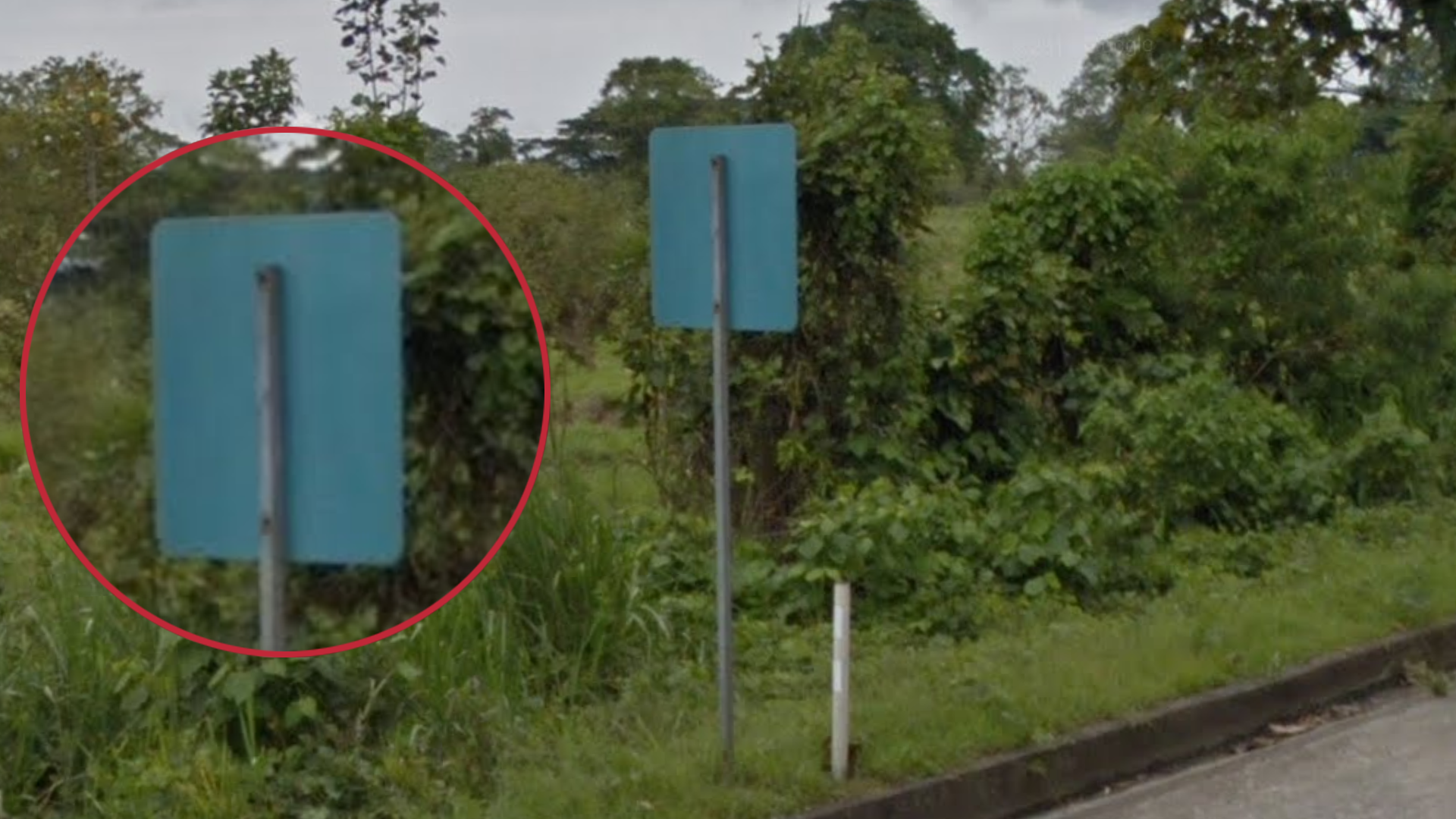
Ecuador
The standard licence plates are white and can be short or long. In street view, you will often see a mix of both sizes.
Commercial vehicles, such as taxis or buses, can have older solid orange plates, or newer ones with an orange bar at the top.
NOTE: Ecuador is the only country in Latin America to use a mix of short and long licence plates.
All Generation 3 coverage is made with a white car, with a short and thick antenna (“stubby antenna”). The antenna and or car are not always visible.
NOTE: Mexico, Brazil and Colombia can also have this same short antenna.
This antenna on a black car can only be found in Colombia, which can help with tough 50-50s with Ecuador. Note that Colombia can also simply have a white car.
Ecuador is one of the few Latin American countries where bollards are very common.
You will find two main types of bollards:
A round bollard with two red stripes,
A flat bollard with two red reflectors on black.
Many other bollards can be found, however, they will almost always have the same colour scheme and style.
NOTE: A similar rectangular bollard can sometimes be found in Malaysia.
Most poles in Ecuador are round and made of concrete. These poles are fairly generic and not all that useful to identify the country.
However, sometimes you will see another, more useful type of concrete pole: the ladder pole. It has a lot of small indents – resembling the steps of a ladder. Within Latin America, these poles are more or less unique to Ecuador.
NOTE: Brazilian waffle poles also have indents, but only a couple – as opposed to the large amount of indents that Ecuadorian ladder poles have.
Most of the coverage in Ecuador is centred around the western part of the country. A large part of the Amazon rainforest has no coverage.
There is also some trekker coverage on the Galapagos Islands.
You can check out the extent of the official coverage on this website.
The Google car antenna has two distinct variations:
The “high” antenna (purple), where the wire around the antenna is entirely above the halfway line of the antenna.
And the “low” antenna (blue) where the majority of the wire is below the halfway point of the line, and there can be a small bit poking up at the very top.
This is most useful when you have the high antenna, since it will always be in the northern half of the country.
Landscape
Miscellaneous
Taxis in Ecuador are very common, and the first letter on each taxi can be used to determine the province you are in. The first letter of the taxi and the first letter of the province name are often the same.
NOTE: This letter will also appear as the first letter on ordinary licence plates respectively in each region. Beware that the letter P, as the letter for Pichincha (the region containing Quito), shows up occasionally in several regions.
The Galapagos Islands are an archipelago located west of mainland Ecuador. There are only trekkers and boat coverage on and around the islands. There is a wide variety of landscapes, including volcanic soil, low shrubbery, and craters (with Galapagos turtles onlooking).





























